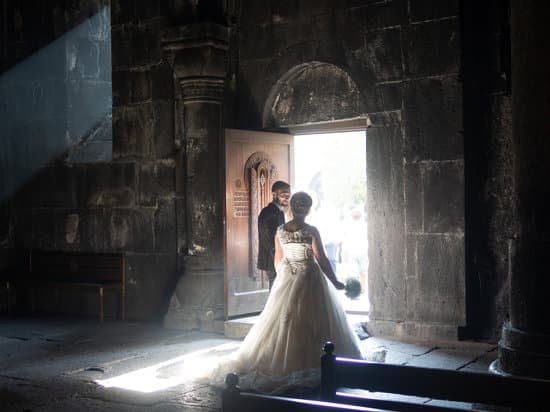Are you wondering how to address wedding invitations with guest? Navigating the proper etiquette for addressing wedding invitations can be a daunting task, especially when it comes to inviting guests. Whether you’re following traditional guidelines or looking for modern approaches, it’s important to ensure that your wedding invitations are appropriately addressed to make your guests feel welcome and honored.
Addressing wedding invitations with guests requires careful consideration of traditional etiquette, modern practices, and special situations that may arise. From including plus-ones to addressing invitations for families with children, there are specific guidelines to follow to ensure that each guest feels respected and valued.
In this article, we will explore the various aspects of addressing wedding invitations with guests, from traditional etiquette to tips for properly formatting and addressing envelopes. We will also cover special situations such as unmarried couples and same-sex couples, as well as the importance of properly addressing invitations for out-of-town guests.
By the end of this comprehensive guide, you’ll have all the information you need to confidently address wedding invitations with guests in a way that reflects your respect and appreciation for your invitees.
Traditional Etiquette for Addressing Wedding Invitations
When it comes to traditional etiquette for addressing wedding invitations, there are certain rules and guidelines that have been followed for decades. For formal events such as weddings, it’s important to adhere to these customs to show respect for the occasion and the guests. Here are some traditional approaches to addressing wedding invitations with guests:
1. Use titles and full names: When addressing the outer envelope, be sure to use titles (Mr. Mrs. Ms.) and the full names of the guests. Avoid using nicknames or abbreviations.
2. Address married couples: For married couples, the traditional format is to address them as “Mr. and Mrs. John Smith.” If the wife has chosen to keep her maiden name, you can address them as “Mr. John Smith and Mrs. Jane Johnson.”
3. Include children’s names on inner envelope: When inviting a family, it is customary to include the children’s names on the inner envelope under their parents’ names. For example, “Mr. and Mrs. John Smith” would be followed by “Samantha” and “Michael.”
Following these traditional etiquette rules not only shows your guests that you have put thought and care into your invitations, but also sets a tone for your wedding event that is classic and timeless.
- Use titles and full names
- Address married couples
- Include children’s names on inner envelope
Modern Approaches to Addressing Wedding Invitations With Guests
In today’s modern society, wedding invitation etiquette has evolved to accommodate various relationship dynamics and living arrangements. When addressing wedding invitations with guests, it’s important to consider the traditional rules while also being mindful of inclusive and contemporary approaches.
Use Both Names on the Envelope
One modern approach to addressing wedding invitations with guests is to simply list both names on the envelope without any specific titles. This allows for flexibility in accommodating different relationship dynamics, including unmarried couples, same-sex couples, or couples who may not adhere to traditional gender roles.
Utilize “And Guest”
Another modern approach is to use “and guest” after the main recipient’s name when inviting a single guest with a plus-one. This shows thoughtfulness and consideration for your guests’ social lives while making it clear that they’re welcome to bring a date.
Consider Electronic Invitations
In today’s digital age, many couples are opting for electronic invitations. When utilizing this modern approach, be sure to include a link for RSVPs and provide clear instructions for guests on how to add their plus-one or specify dietary restrictions. Remember that even with electronic invites, proper addressing is still key in ensuring that all guests feel included and respected.
By incorporating these modern approaches into your wedding invitation etiquette, you can ensure that all of your guests feel welcomed and included in the celebration of your special day. Whether using traditional paper envelopes or digital invites, being mindful of inclusive language and considering various relationship dynamics is essential in addressing wedding invitations with guests in today’s modern world.
Including Plus-Ones
When it comes to addressing wedding invitations with guests, one important aspect to consider is the inclusion of plus-ones. Determining who gets a plus-one can be a delicate matter, but there are some traditional and modern approaches to help guide you.
Traditionally, only married or engaged couples were invited together, while single guests did not receive a plus-one. However, in modern times, many couples choose to extend the invitation of a plus-one to all guests, regardless of their relationship status.
If you decide to follow the traditional etiquette for addressing wedding invitations with guests, then only those who are married, engaged, or in a long-term committed relationship should receive a plus-one. This means that single guests who are not in a serious relationship would not be extended the offer of bringing a guest.
On the other hand, if you opt for the modern approach to addressing wedding invitations with guests, then you may choose to offer all guests the opportunity to bring a plus-one, regardless of their relationship status.
If you are allowing your single friends the option of bringing any guest they choose rather than by name, then simply include “and Guest” after their name on the envelope. By considering these guidelines on how to address wedding invitations with guests and properly formatting envelopes, you can ensure that all your invitees feel welcomed and honored at your special day.
Addressing Invitations for Families With Children
When it comes to addressing wedding invitations for families with children, there are a few traditional and modern approaches you can take. Traditionally, the proper way to address an invitation to a family with children is to address it to the parents and then include the children’s names on the second line. For example, “Mr. and Mrs. Smith” on the first line and “Samantha and Michael” on the second line.
However, in modern times, some couples may opt for a more casual approach and simply address the invitation to the entire family using language such as “The Smith Family” or “The Smiths.” This approach is often seen as more inclusive and avoids any potential confusion about whether or not the children are invited.
In some cases, you may need to be more specific about which members of the family are invited. If you are only inviting certain children (for example, if they are older teenagers or young adults), it’s important to include their names specifically on the invitation. This can help avoid any misunderstandings about who is actually invited to the wedding.
It’s important to keep in mind that while there are traditional guidelines for addressing wedding invitations for families with children, ultimately it is up to the couple getting married how they want to handle this aspect of their wedding planning. The key is clear communication and making sure that your guests understand exactly who is invited.
Special Situations
When it comes to addressing wedding invitations for unmarried couples and same-sex couples, it’s important to be considerate and respectful of their relationship. For unmarried couples, the traditional etiquette would be to address the invitation to both individuals separately if they do not live together. However, if they do live together, it is appropriate to address the invitation to both individuals on the same line, using “and” between their names.
For same-sex couples, the key is to treat them just like any other couple. Whether they are married or engaged, their names should be listed in alphabetical order on the same line. If they are not legally married but consider themselves a committed couple, it is best to address the invitation using “and” between their names.
It’s also important to note that courtesy titles should be used as appropriate when addressing invitations for unmarried and same-sex couples. Whether it’s “Mr.” and “Ms.”, “Mrs.” and “Ms.”, or any other combination, this shows respect for each individual in the couple. Ultimately, when addressing invitations for these special situations, the most important thing is to acknowledge and respect the relationships of your guests while maintaining proper etiquette.
Tips for Properly Formatting and Addressing Envelopes
When it comes to addressing wedding invitations with guests, proper formatting and addressing envelopes are crucial to ensure that everyone feels included and valued. The way you address your invitations sets the tone for your wedding and shows your guests that you appreciate their presence on your special day. Here are some tips for properly formatting and addressing envelopes to make sure your wedding invitations with guests are handled with care and consideration.
First and foremost, it’s essential to use the correct titles when addressing your envelopes. For married couples, traditional etiquette dictates using “Mr. and Mrs.” followed by the husband’s full name. For unmarried couples or those who prefer to keep their own last names, list their names on separate lines in alphabetical order. If one of your guests holds a distinguished title, such as a judge or doctor, be sure to include it on the envelope.
Another important aspect of proper envelope addressing is including all necessary details. This means spelling out all words in the address, including the state name fully (no abbreviations), and ensuring that zip codes are accurate. It’s also a good idea to double-check the spelling of your guests’ names to avoid any embarrassment or misunderstandings.
Properly formatting wedding invitations with guests also involves considering the outer appearance of the envelope. Selecting an elegant font for both the names and addresses adds a touch of sophistication to your invitations. Additionally, opting for hand-calligraphy or professional printing services can elevate the overall aesthetic appeal of your envelopes.
| Tips for Addressing Envelopes | Details |
|---|---|
| Use correct titles | Mr. Mrs. Dr. etc. |
| Include all necessary details | Spell out words, full state name, accurate zip codes |
| Select an elegant font | Adds sophistication |
Addressing Wedding Invitations for Out-of-Town Guests
When it comes to addressing wedding invitations for out-of-town guests, it’s important to make them feel welcomed and valued. This is especially important as they are making the effort to travel long distances to attend your special day. Here are some tips on how to properly address wedding invitations for out-of-town guests.
Include Their Full Address
When addressing the envelope for out-of-town guests, be sure to include their full address to ensure that the invitation reaches them in a timely manner. This includes their street address, city, state, and zip code. Double-check the accuracy of the address before sending out the invitations to avoid any potential delivery issues.
Provide Travel Information
In addition to addressing the invitation, consider including a separate card with information about local accommodations, transportation options, and any planned activities or events taking place before or after the wedding. This will help out-of-town guests better plan their trip and feel more comfortable navigating your wedding destination.
Personalize the Invitation
To make your out-of-town guests feel even more special, consider adding a personalized note or additional details about what you’re looking forward to sharing with them on your big day. Taking this extra step can really show your appreciation for their efforts in attending your wedding celebration.
By following these tips on how to address wedding invitations for out-of-town guests, you can ensure that they feel included and appreciated from the moment they receive their invitation. Making an effort to make them feel welcome will only add to the joy of your special day.
Conclusion
Planning a wedding can be an overwhelming task, but addressing wedding invitations with guests doesn’t have to add to the stress. By following traditional etiquette or opting for modern approaches, you can ensure that your guests feel valued and respected. Whether it’s including plus-ones, addressing invitations for families with children, or handling special situations like unmarried or same-sex couples, there are ways to navigate these delicate matters with tact and grace.
Properly formatting and addressing envelopes is not just about following rules; it’s about showing thoughtfulness and consideration towards your guests. It sets the tone for your big day and shows that you have taken the time to personalize each invitation. Taking care in addressing wedding invitations for out-of-town guests also showcases your attentiveness to their needs and ensures they feel welcome at your celebration.
In conclusion, how to address wedding invitations with guests is an important aspect of wedding planning that should not be overlooked. By paying attention to traditional etiquette or considering more modern approaches, you can make sure your guests feel honored and valued. Taking the time to properly address invitations for families with children, unmarried or same-sex couples, as well as out-of-town guests, demonstrates your thoughtfulness as a host and sets the stage for a memorable celebration.
Frequently Asked Questions
How Do You Address a Wedding Invitation With a Guest?
When addressing a wedding invitation with a guest, it is important to first address the primary invitee. You can then add “and Guest” after their name. If you happen to know the guest’s name, it is more personal and polite to address them by their individual names.
What Is the Best Way to Address Wedding Invitations?
The best way to address wedding invitations is to use proper titles and full names. This means addressing married couples as “Mr. and Mrs. John Smith” or “Dr. and Mrs. Jane Doe.” For unmarried couples living together, both names should be listed alphabetically on separate lines.
Does the Male or Female Name Go First on Guest Invitations?
Traditionally, the male’s name goes first on guest invitations, especially for older guests who may still adhere to traditional etiquette norms. However, in modern times, it is perfectly acceptable to list the female’s name first or even alphabetically without regard to gender.
Ultimately, it depends on the preference of the couple and the individuals involved in the invitation process.

I have been involved in marriages for over 20 years helping couples and singles understand more about them.





